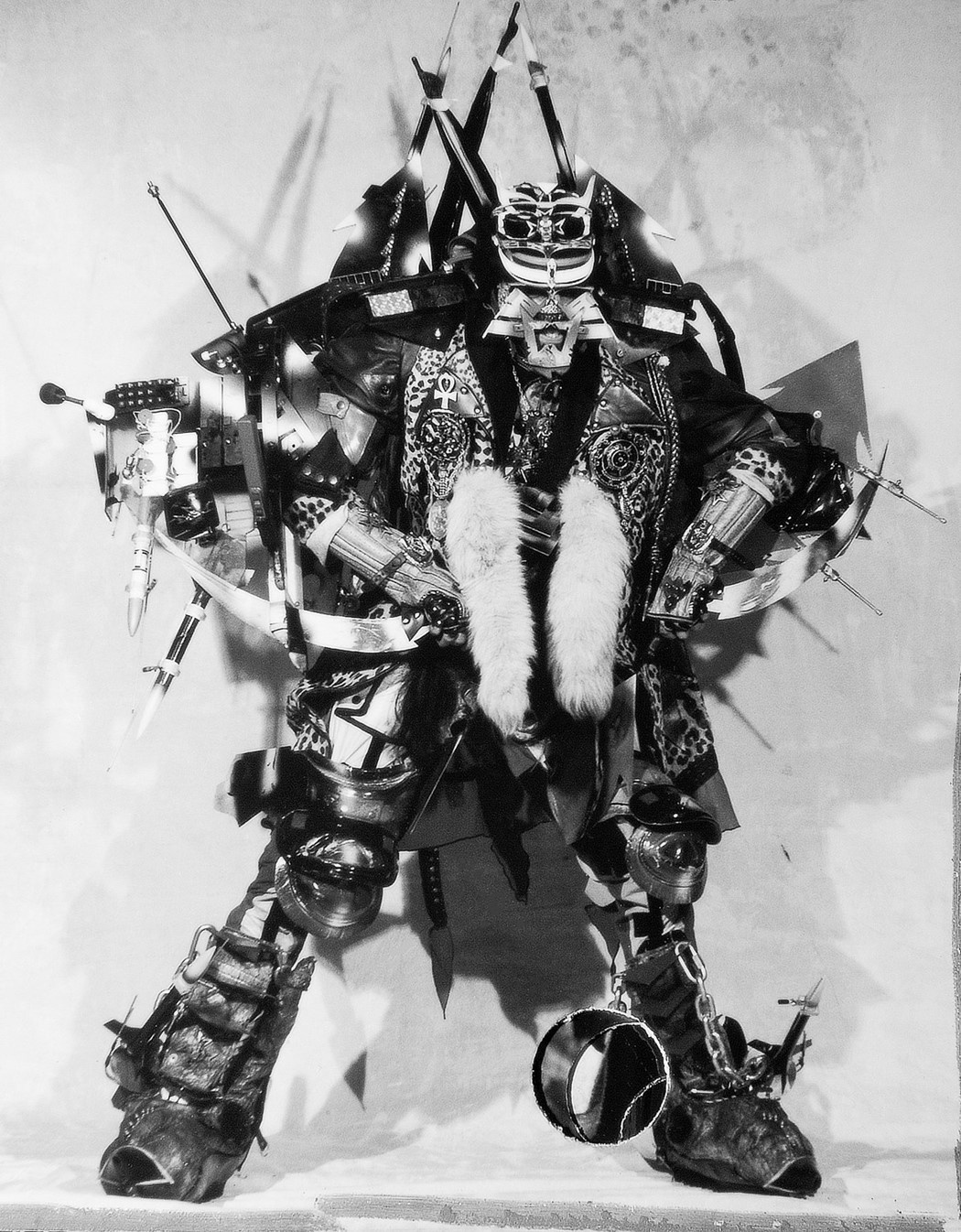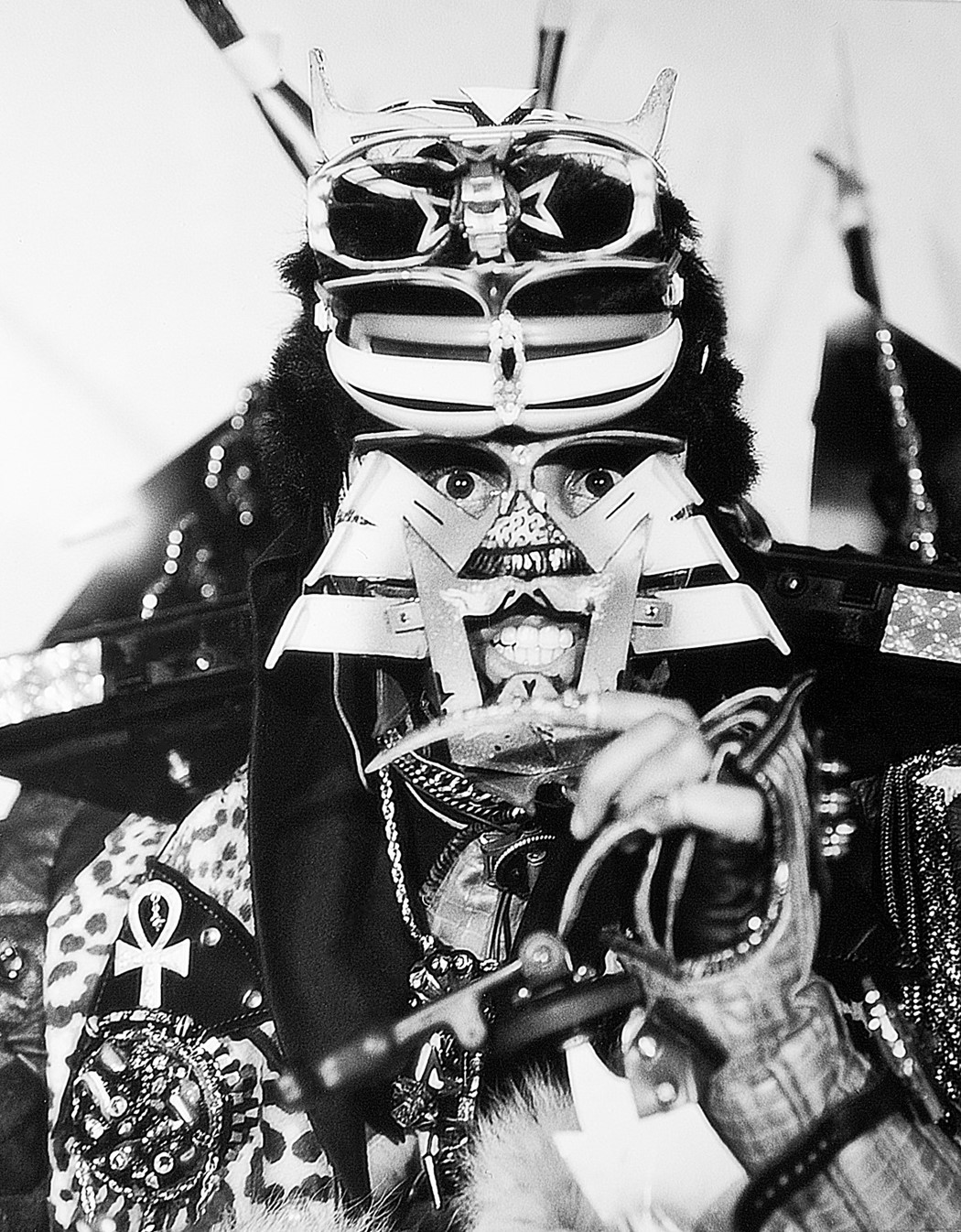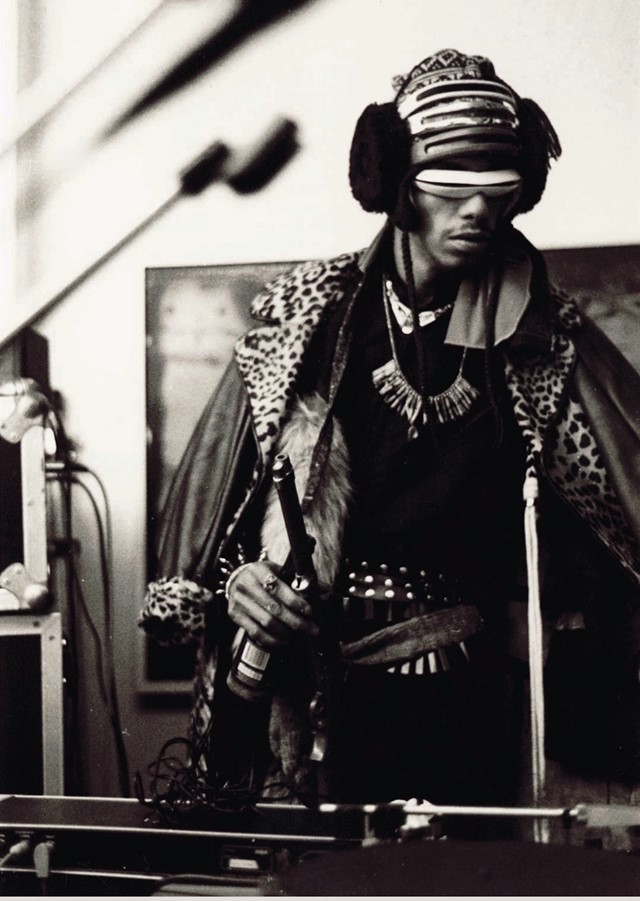The Artist and Hip Hop Witch Doctor of 1980s New York
Emerging from the downtown scene of early 80s New York, the shamanic MC and artist Rammellzee evolved from teenage graffiti bomber to polymath warrior monk, codifying language with an art practice dedicated to unleashing the power of letters. The extent of his influence today is as difficult to decipher as the theoretical screeds that outline his mythical dual philosophy of Gothic Futurism and Ikonoklast Panzerism. Dead at 49, he was a pioneering graffiti artist and rapper, celebrated visual artist and deconstructionist savant – a self-styled American demigod who crafted his pharaonic name from an absurdist equation for aerodynamics. This is the meaning of Rammellzee.
As befits a true enigma, Rammellzee’s legend is littered with rumours. Raised in Far Rockaway, Queens by Latino and Italian parents, he tagged subway cars even though his father was in the transport police. His aunts were 60s R&B singers The Flirtations, he wanted to study dentistry, was signed to a modelling agency, and briefly dated Madonna. While his real name remains a mystery, an appearance waving a shotgun in Charlie Ahearn’s seminal hip hop film Wild Style, a radical single release – Beat Bop – produced by Jean-Michel Basquiat, and a cameo in Jim Jarmusch’s Stranger Than Paradise are concrete milestones in his early career.
Beat Bop is of particular importance. The Gangster Duck vocal technique he used – nasally trading bars with 15-year-old Lower East Side rapper K-Rob – is recognised as shaping the sound of acts including Cypress Hill and the Beastie Boys. Basquiat’s involvement is also key, reflecting Rammellzee’s proximity to the worlds of art, business and hip hop that were colliding downtown at the time. Interviewed by veteran rap writer Andrew Nosnitsky in Spin magazine, the late New York scene-maker Glenn O’Brien said: “Ramm saw himself as an important artist, but I think he was probably a little jealous that Basquiat was making money. So Beat Bop came together as a showdown.
“I knew Rammell quite well – and he was a crazy motherfucker,” he said. “He was extremely talented, he had this whole theory about graffiti. I still have his manifesto, this impenetrable discourse on his theories about the letter. He was working with resins and he never wore a mask or anything, so I think maybe he was affected by his art materials.” His musical output was scattered and esoteric, but other, more prolific aspects of his practice made up for it. He created multiple alter egos for performing, 21 Garbage Gods each with an exoskeleton costume and backstory in Rammellzee’s canon. Like Mecha samurai from a Kaiju monster film, Gasholeer, Chaser the Eraser and Ripcord Rex were armoured in recycled trash, bristling with plastic toy weaponry and wore helmets clad in Rammellzee’s signature sunglasses.
In the Battle Station, a Tribeca loft where he lived and worked, this repurposed aesthetic spawned Letter Racers – sculptures representing the alphabet as spacecraft-like combat vehicles. They illustrated a mythology rooted in the wild-style typography he and graffiti legends Dondi and Futura had painted on trains in the late 70s, interwoven over time with strands of quantum physics, history and theology. Arrows painted on letters armed them like missiles. Trains became rolling galleries, and individual carriages were treated like pages in a book, written on by bombers in the same way medieval monks had illustrated manuscripts with ornate text. Gothic Futurism was Rammellzee continuing the monks’ work in the dark tunnels under New York, using a writing style called Ikonoklast Panzerism to defend his sacred letters against modern-day corruption.
His manifesto, Iconic Treatise Gothic Futurism: Assassin Knowledges of the Remanipulated Square Point, One to 720°, reads like a delusional paranoid’s stream of consciousness, or Pynchon-esque slab of hysteric realism. But rather than O’Brien’s fear that it was the glue he worked with talking, critic Carlo McCormick sums up Rammellzee’s difficult rhetoric best in a review from February 1987’s Artforum: “The seamlessness of his conceptual invention leads one to wonder whether the meaning is indeed decipherable, and whether perhaps it is only our ignorance that makes it sound like gibberish.” In terms of gauging his cultural relevance today, it was Rammellzee whom Supreme approached for their first collaboration in 1994, and with whom he worked until his death in 2010. Like Sun Ra before him, he inhabited an invented cosmic universe where art and life blurred, pivotal in Afrofuturism’s assimilation of the avant-garde into popular culture. And since his passing, Rammellzee remains a messianic inspiration for the music and art scenes that continually reference, reissue and re-exhibit his transcendental body of work. If anyone knows where gods go to die, it’s Rammellzee.


Photography Per Zennström.












